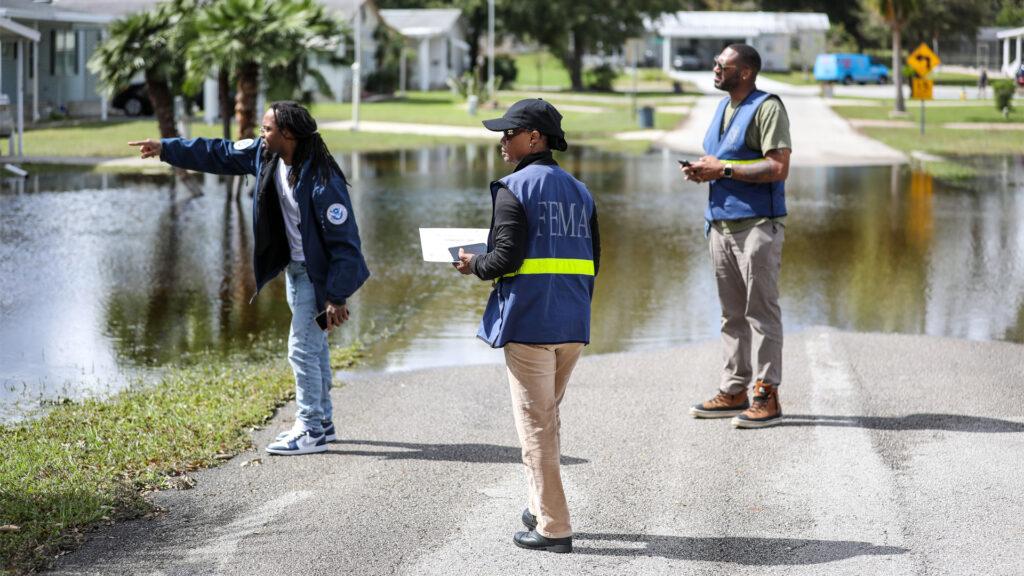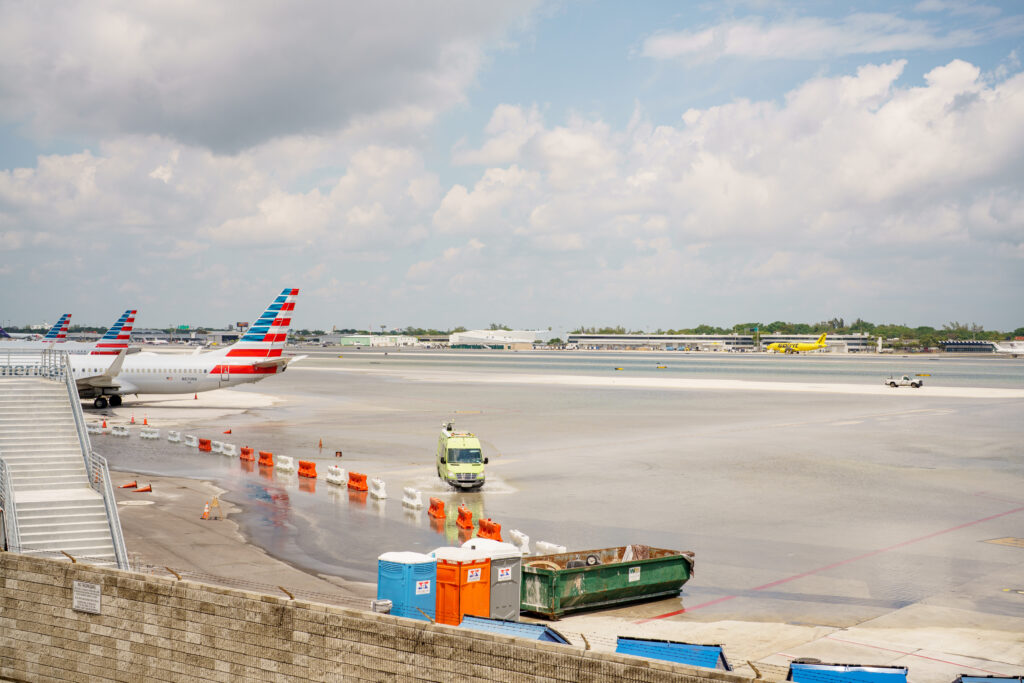By the Sun Sentinel Editorial Board
One November morning in 2023, residents of Oakland Park woke up to street flooding spreading throughout the city.
Unable to drain the combination of a king tide and the no-name storm that dumped a foot of rainwater on Broward, the C-13 canal was overflowing its banks.
The rain is not a political issue. Canals that are needed to move floodwater are not political. But apparently, the money to keep Floridians safe from those and other rising waters is too political for the Trump administration.
Calling it politicized and wasteful, the new director of the Federal Emergency Management Agency (FEMA) has abruptly clawed back almost $300 million already awarded to Florida to battle floods, hurricanes and rising tides.
FEMA’s Building Resilient Infrastructure and Communities program, known as BRIC, would have elevated roads in Jacksonville, built a hurricane safe room for first responders in Key West and hardened the sprawling system of canal infrastructure that makes life possible in South Florida.
Florida forfeits millions

Even the state Division of Emergency Management, under the direction of Gov. Ron DeSantis, has to return $37 million in federal BRIC money.
The National Institute of Building Sciences, a research group created by Congress, has found that the feds’ $27 billion in disaster mitigation spending will ultimately save $160 billion in economic losses.
In Florida, it saves lives. But President Donald Trump is floating the idea of shutting down FEMA altogether, and DeSantis has all but shrugged it off.
“Cut the bureaucracy of FEMA out entirely and that money will go further than it currently does, at greater amounts,” DeSantis said in February.
FEMA has been rightfully criticized. It squandered money and manpower on smaller emergencies that states could have handled on their own.
Scoring political points
But it has also been undercut at every turn so that Trump could score political points.
It was Trump and his political allies who, in the aftermath of Hurricane Helene, spread lies that FEMA was only giving disaster victims $750 each and that money was going to illegal immigrants. None of it was true.
The truth is that struggling through the aftermath of a disastrous Florida hurricane without FEMA risks a second disaster.
DeSantis has been talking as though FEMA might be overhauled, or dissolved, and a huge chunk of replacement federal cash would simply fall into state coffers as a block grant.
Last week, the governor said it really doesn’t matter if block grant cash fails to materialize. “Well, listen, if that happens, we’ve got a big surplus,” he said.
It would take some adjustments, but Tallahassee would make it work.
Don’t believe it
Floridians have every reason to believe otherwise.
In April 2023, DeSantis declared a state of emergency in Broward after the historic flood that left behind $100 million in damages and caused the total destruction of Fort Lauderdale City Hall.

Two months later, DeSantis vetoed 162 of 281 water projects in the state budget. But the projects were not exactly dead. People could still take their requests to a state agency and await a bureaucratic solution, said DeSantis, the critic of FEMA bureaucracy.
Consider this: Why was FEMA paying $312 million for Florida water projects to begin with? Infrastructure upgrades to make Florida more resilient is a Florida problem.
This state has had a multibillion-dollar surplus for years. Tallahassee had the money to fix $312 million in critical infrastructure problems at any point. The state chose not to spend it.
Some projects spent some of that $312 million, leaving a $293 million hole.
The South Florida Water Management District, for instance, had spent just $6 million of the $150 million in FEMA money to build flood mitigation structures in Broward and North Miami-Dade.
They are still needed. But no one in Tallahassee is talking with any sense of urgency about picking up the remaining tab.
If the state is so reluctant to shell out those millions, how likely is it to match the resources FEMA brings to a disaster?
In addition to financial aid, FEMA can draw resources from the entire federal government: specialized disaster medical teams from Health and Human Services; emergency fuel supplies from the Department of Energy; environmental cleanup by the EPA and search and rescue aircraft and boats. More than 50,000 federal employees are immediately available.
Tallahassee doesn’t have the infrastructure and has not shown the appetite for duplicating anything close to those vast resources.
But if the governor and Tallahassee are serious about taking on the agency’s role, they can start by cutting a check for $293 million and replacing all that money Trump’s FEMA just erased.
This opinion piece was originally published by the Sun Sentinel, which is a media partner of The Invading Sea. The Sun Sentinel Editorial Board consists of Opinion Editor Steve Bousquet, Deputy Opinion Editor Dan Sweeney, editorial writers Pat Beall and Martin Dyckman, and Executive Editor Gretchen Day-Bryant. Banner photo: FEMA workers set up a disaster recovery center location in a Manatee County in 2024 (Photo by Carlos M. Vazquez II/FEMA via Defense Visual Information Distribution Service).
Sign up for The Invading Sea newsletter by visiting here. To support The Invading Sea, click here to make a donation. If you are interested in submitting an opinion piece to The Invading Sea, email Editor Nathan Crabbe at ncrabbe@fau.edu. To learn more about king tides, watch the video below.



